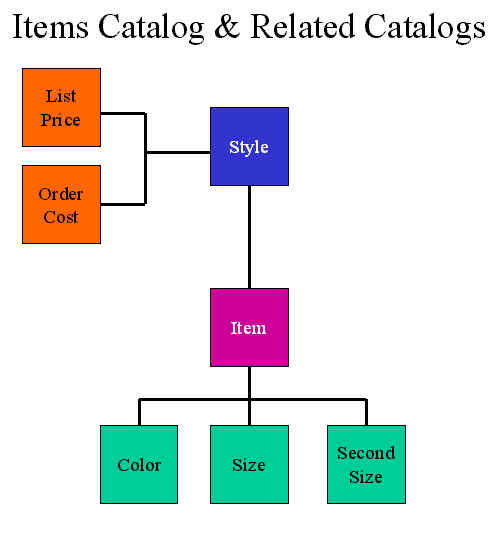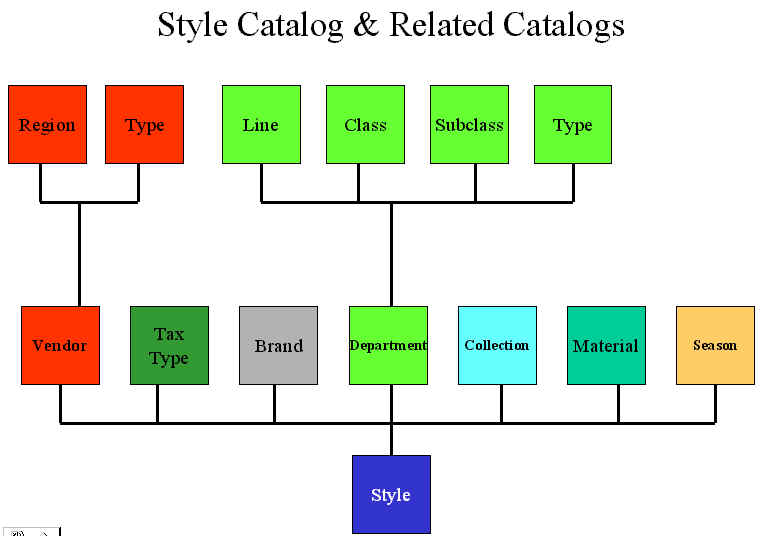
Chapter Topics
Relational vs Flat File Databases
The Point of Statistics
Relational vs Flat File Databases
XpertMart™ stores all of your data in a
relational database. The database is called relational because information
is stored in different tables and these can be related to each other through
a number of fields. (Each Catalog in XpertMart™ is in fact a table in the database). Older databases
were called flat file databases because they stored data in horizontal
columns and rows in a single place. Usually, the datum in a flat file database
are only connected by a single field such as an ID or Key field.
You can imagine a flat file database as being something like an Excel
spreadsheet whereas a relational database is more like a web site with hyperlinks
that do not have to follow a hierarchical pattern. Naturally, the relational
database offers far greater flexibility in both storing and retrieving information.
It is important for you to understand the difference and keep it in mind
as you begin to enter data into XpertMart™ and later
look to make queries to the database and run reports.
With older, flat file databases, it was often common to have to cram a
lot of information into a single field. For example, a single field such
as a style code usually contained multiple pieces of information incluiding
the style, the size, the color and the price. When you use XpertMart™ it is no longer necessary to cram all of this data into
a single field since related information can always be derived.

Consider the case of the Items Catalog and how it relates to
some of the other catalogs in the system. Every item in the items catalog
has a color that links it to the Colors Catalog and a size that links it to
the Sizes Catalog. The item "belongs" to a Style; it is through this relationship
that we can derive other information about that Item.

Just as the Item can be said to "belong" to a Style, the Style also "belongs"
to a Vendor. Notice that while vendor information is not stored anywhere
in the Items Catalog, you are still able to identify an Item with a Vendor
because the two pieces of information are related to each other, in this
case via the Style. Similarly, you can derive an Item's Brand, the Line it
belongs to and the Tax Type it falls under.
The Point of Statistics
The relational nature of the data becomes truly powerful once
you being ringing-up sales. Whenever you sell an item, XpertMart™ records the sale of that particular item.
But because that item is related to so many other pieces of data, that sale
also affects them. So at the end of the day or week or month, you can see
not only how many of a particular item were sold, but you can also
see the total sales of that particular Style (by aggregating all Items that
belong to the Style) and, by aggregating all Styles that belong to the same
Vendor, see the total sales of that Vendor.
This is a very simple example to illustrate an important point: whenever
you make a sale, you are storing multiple pieces of information. How many
pieces of information depends on how richly you fill in your Catalogs. But selling one Item can "answer" more
than 40 questions: what color was it? what price was it? what store was it
sold in? who sold it? when? in what size? what was its brand? who is the
vendor of the item? what region does that vendor belong to?...and on and
on. All of these answers are stored in the database every time you make a
sale. Therefore, we like to call the POS the Point of Statistics as much
as it is the Point of Sale.
It's not just money that is being exchanged at the POS, it's information. And in the long run, the information you are capturing can prove to be more valuable than the money because, if you use it correctly, it will be the key to many future sales. So, if you are not pressed for time, take advantage of as many of the fields in the Catalogs as you can. They will help you better understand your business.
Copyright © 2002 XpertMart